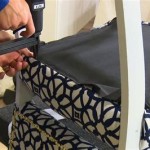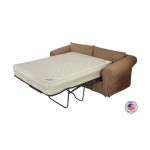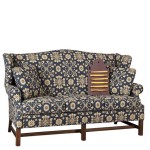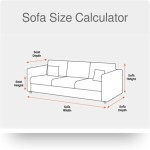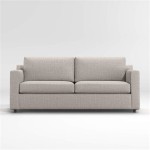How Do You Know If a Sofa Is Real Leather?
Purchasing a leather sofa represents a significant investment, intended to provide comfort and style for years to come. However, the market is replete with alternatives designed to mimic the appearance and texture of genuine leather, making differentiation challenging. Distinguishing between real leather and its synthetic counterparts requires a keen eye and understanding of the materials' characteristics. This article provides a comprehensive guide to identifying a real leather sofa, empowering consumers to make informed purchasing decisions.
Examining the Surface: Grain, Texture, and Imperfections
Real leather possesses a unique grain pattern resulting from the natural hide of an animal. This grain is not uniform; it features variations, wrinkles, and subtle imperfections. These characteristics are inherent to the material and should be viewed as hallmarks of authenticity. In contrast, synthetic leathers, such as polyurethane (PU) or polyvinyl chloride (PVC), often exhibit a consistent, repetitive grain pattern due to their manufactured nature. The artificial texture is deliberately uniform, lacking the organic nuances found in genuine leather.
When inspecting the sofa surface, look for subtle differences in color and texture across the cushions and frame. Real leather will display slight variations due to differences in the hide and tanning process. Fake leather, created in a controlled factory environment, lacks these subtle character changes. Moreover, real leather tends to become softer and more supple with age, developing a patina that enhances its aesthetic appeal. Synthetic materials, however, typically retain their original texture and appearance over time.
Another telltale sign is the presence of pores or hair follicles. Real leather, being a natural material, features tiny pores that were once used by the animal's skin. These pores, though small, are visible upon close inspection. Synthetic leathers often lack these pores altogether, or they may have artificially imprinted pores that are too uniform and lack depth. Use a magnifying glass to closely examine the surface and confirm the presence of natural pores before assuming the material is genuine leather.
Analyzing the Edges and Backing
The edges and backing of a sofa provide valuable clues about its composition. Real leather sofas typically have raw, unfinished edges that reveal the fibrous structure of the hide. These edges may be slightly rough or uneven, reflecting the natural layers of the material. Synthetic leathers, on the other hand, often feature meticulously finished edges that are sealed or folded, obscuring the underlying material. The precise, clean-cut appearance of the edges is indicative of a manufactured product.
Examine the underside or backing of the sofa cushions. Real leather will have a suede-like or textured backing, a result of the flesh side of the hide. The texture is rough, like felt, not smooth plastic. Synthetic leathers often have a woven or knitted fabric backing that is laminated to the surface material. This fabric backing is easily identifiable and is a strong indicator that the sofa is not made of genuine leather. Feel the backing; if it has a distinct weave or is easily separated from the surface, it is likely synthetic.
Pay close attention to seams and stitching. Real leather requires more robust stitching techniques due to its natural strength and thickness. The stitches may be slightly thicker and more spaced apart than those used on synthetic materials. The seams on real leather sofas typically appear more durable and less prone to fraying. Synthetic leathers, being thinner and more pliable, often allow for finer, more closely spaced stitches, which can sometimes appear less sturdy. However, this is not always a definitive indicator, as high-quality synthetic sofas may also employ robust stitching.
The Smell Test: Authentic Aroma vs. Chemical Odor
One of the most reliable methods for identifying real leather is the smell test. Genuine leather possesses a distinct, natural aroma derived from the tanning process and the inherent oils in the hide. This aroma is often described as earthy, musky, or even slightly sweet. It is a characteristic scent that is difficult to replicate artificially. Synthetic leathers, conversely, typically emit a chemical or plastic-like odor that is often unpleasant. This odor is a byproduct of the manufacturing process and the synthetic materials used in their construction.
When conducting the smell test, avoid relying solely on initial impressions. Allow the sofa to sit in a well-ventilated area for a few minutes to dissipate any lingering odors from the showroom or packaging. Then, take a deep breath and carefully inhale the aroma. If the scent is unmistakably chemical or plastic-like, the sofa is likely not made of real leather. If the aroma is natural and earthy, it is a strong indication of authenticity. However, be aware that some manufacturers may attempt to mask the synthetic odor with artificial fragrances, so it's important to combine this test with other methods.
It is important to note that different types of leather may have slightly different odors. For example, vegetable-tanned leather, which is tanned using natural plant extracts, may have a slightly sweeter or more earthy aroma than chrome-tanned leather, which is tanned using chemical compounds. Familiarizing yourself with the different types of leather and their associated scents can help you make a more accurate assessment of the sofa's authenticity.
The Water Absorption Test
Real leather is a porous material, meaning it will absorb a small amount of water. Synthetic leathers, generally waterproof, will not absorb water and cause it to bead up on the surface.
To perform the water absorption test, place one or two small drops of water on an inconspicuous area of the sofa, such as the back or bottom. Observe what happens to the water over the next few minutes. If the water is absorbed by the material, leaving a slight damp spot that gradually fades, it is a strong indication that the sofa is made of real leather. The water will interact with the natural fibers of the hide, causing them to swell slightly and absorb the moisture.
If the water beads up on the surface and rolls off without being absorbed, it is likely that the sofa is made of synthetic leather. Synthetic materials are designed to be water-resistant, preventing moisture from penetrating the surface. The water will remain intact on the surface, creating a visible droplet that does not diminish over time. While not a definitive test on its own, the water absorption test can provide valuable evidence to support your assessment of the sofa's authenticity.
Checking the Price and Labeling
Real leather sofas are generally more expensive than their synthetic counterparts due to the higher cost of materials and the specialized manufacturing processes involved. A significantly lower price point, compared to other leather sofas, is a red flag and should prompt further investigation. Price should not be the only factor in making a decision, but it should be one of the considerations.
Carefully examine the labels and tags attached to the sofa. Manufacturers are legally required to accurately represent the materials used in their products. Look for terms like "genuine leather," "full-grain leather," or "top-grain leather," which indicate that the sofa is made of real leather. Be wary of ambiguous terms like "leatherette," "faux leather," or "PU leather," as these typically refer to synthetic alternatives. If the labels are unclear or misleading, contact the manufacturer or retailer for clarification.
It's also important to be aware of different types of real leather. Full-grain leather is the highest quality, using the entire thickness of the hide. Top-grain leather is the second-highest quality, where the top layer of the hide is sanded to remove imperfections. Split-grain leather is the lowest quality real leather, taken from the bottom layers of the hide and often coated with a synthetic layer. Knowing these distinctions can help you understand the value and quality of the leather used in the sofa.
Consulting with Experts and Seeking Second Opinions
If you are still unsure about the authenticity of a leather sofa, consider seeking advice from a furniture expert or a leather specialist. These professionals possess the knowledge and experience necessary to accurately assess the materials and construction of the sofa. They can examine the sofa in person, conduct thorough inspections, and provide informed opinions based on their expertise.
Obtaining a second opinion from a trusted source can also be beneficial. If you have a friend or family member who is knowledgeable about leather furniture, ask them to examine the sofa and share their perspective. A fresh set of eyes can often identify subtle details that you may have overlooked. However, it's important to choose someone who is truly knowledgeable about leather, as a casual observer may not be able to accurately distinguish between real and synthetic materials.

Six Ways To Tell If Furniture Is Actually 100 Real Leather Currier S

Leather Vs Leatherette Sofa How To Tell Real Couch

How Do I Tell If Have Leather Or Vinyl Medic

Real Leather Or Faux And How To Tell Them Apart

I Team A Leather Sofa How To Know If It Is Real

How Do You Tell If A Leather Sofa Is Real Chesterfields

Leather Vs Leatherette Sofa How To Tell Real Couch

Fake Vs Real Leather Couches How To Tell The Difference Choice

Faux Leather Vs Real A Guide To Furniture

Deciphering Comfort Air Leather Vs Genuine Sofas Which Is Right For You Direct Furniture Warehouse

